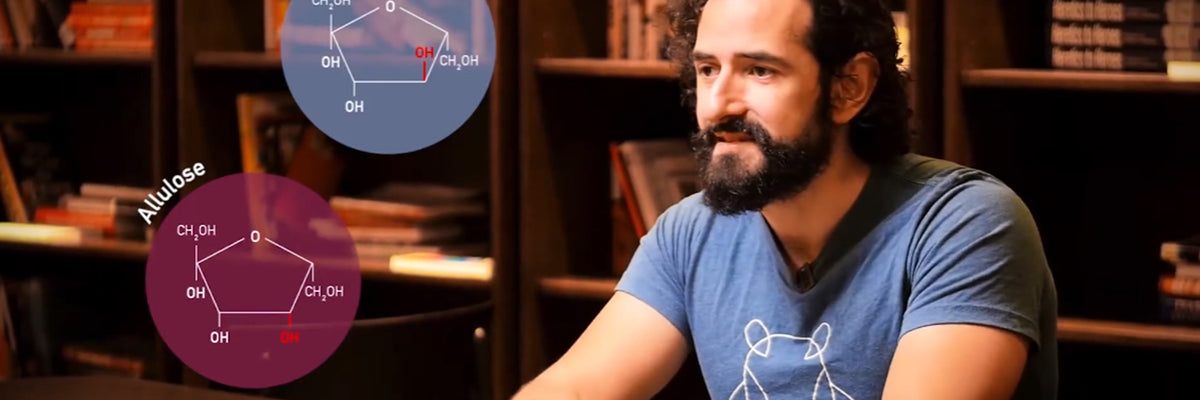
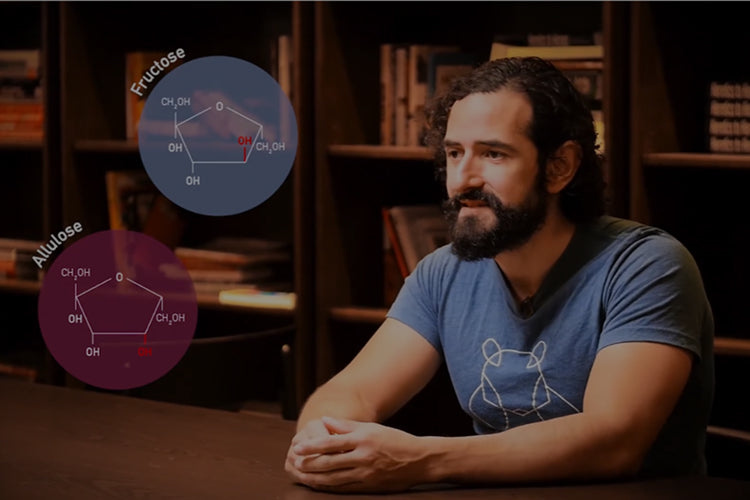
What is allulose?
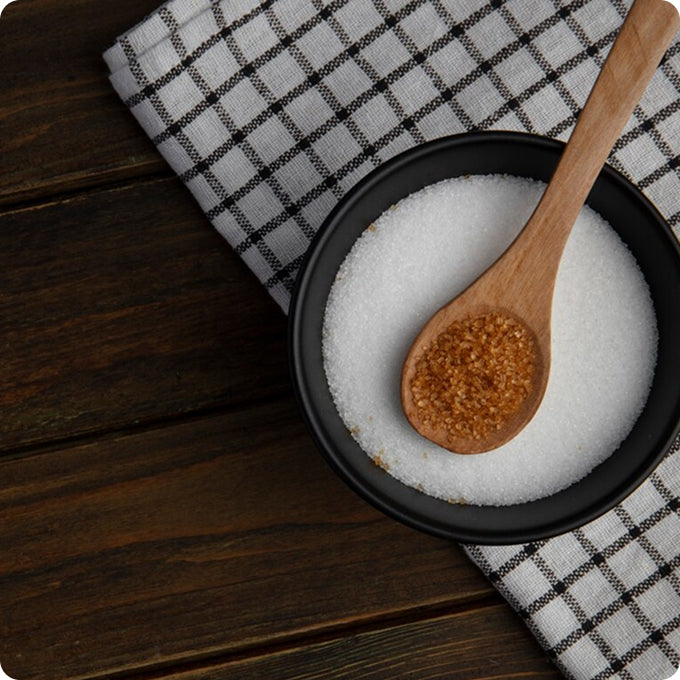
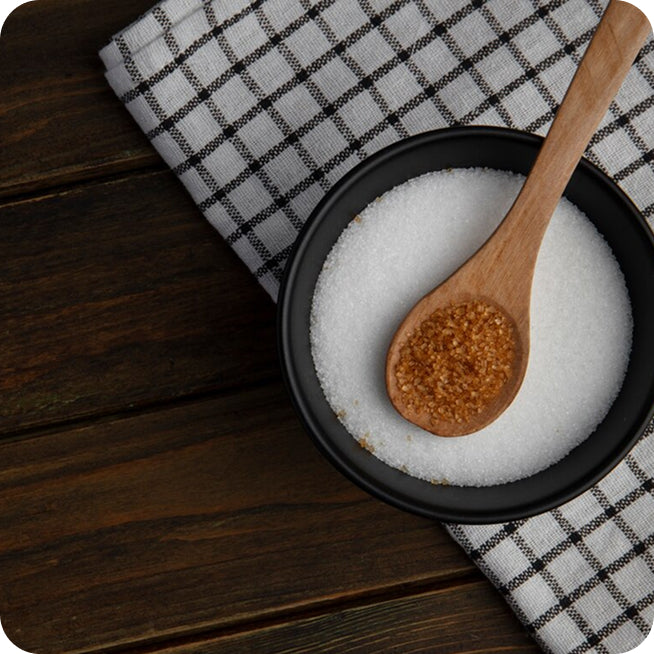
Allulose
Allulose (a rare sugar also known as D-psicose) is one of many different sugars that exists in nature. It was identified in wheat over 70 years ago and is present in very small quantities in certain fruits such as figs and raisins as well as in foods like caramel sauce, maple syrup and brown sugar.
Like glucose and fructose, allulose is a monosaccharide, or single sugar. In fact, allulose has the same chemical formula as fructose, but is arranged differently. This difference in structure prevents your body from processing allulose the way it processes fructose.
Manufacturers produce allulose for commercial use by using enzymes to convert fructose from corn and other plants into allulose. Allulose is 70% as sweet as sugar so it is often combined with other sweeteners in foods (we blend it with monk fruit!) to make up the difference.


Benefits of Allulose
We love Allulose because it offers unique benefits:
- It's very low in calories (only 1/10 the calories of table sugar) because it is not metabolized (1, 2)
- Does not raise blood glucose or insulin levels in healthy individuals or when consumed by people with type 2 diabetes (3, 4, 5, 18)
- Modestly reduces post-meal glycemic response in people with type 2 diabetes, prediabetes, and with healthy blood glucose when consumed in combination with other carbohydrates (6, 7, 8, 18)
- Helps control and manage body weight through its anti-hyperlipidemic and anti-hyperglycemic affects (18, 22)
- Tolerated digestively in healthy adults at 30 grams per day (9, 10)
- Does not cause tooth decay (11)
- Behaves like sugar when baked (caramelization and browning; adds bulk and texture; high affinity for water makes baked goods soft and moist)
- Blends well with other sweeteners
- Allulose is generally recognized as safe (GRN 400 and 498) by the United States Food and Drug Administration (FDA) for use in foods and beverages, which means it is safe for people of all ages to consume (12)
Hungry? You might like these...
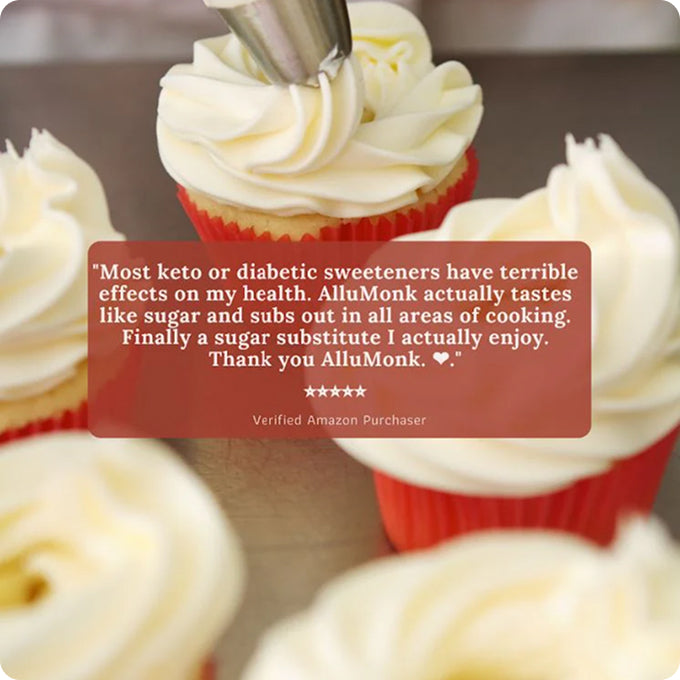
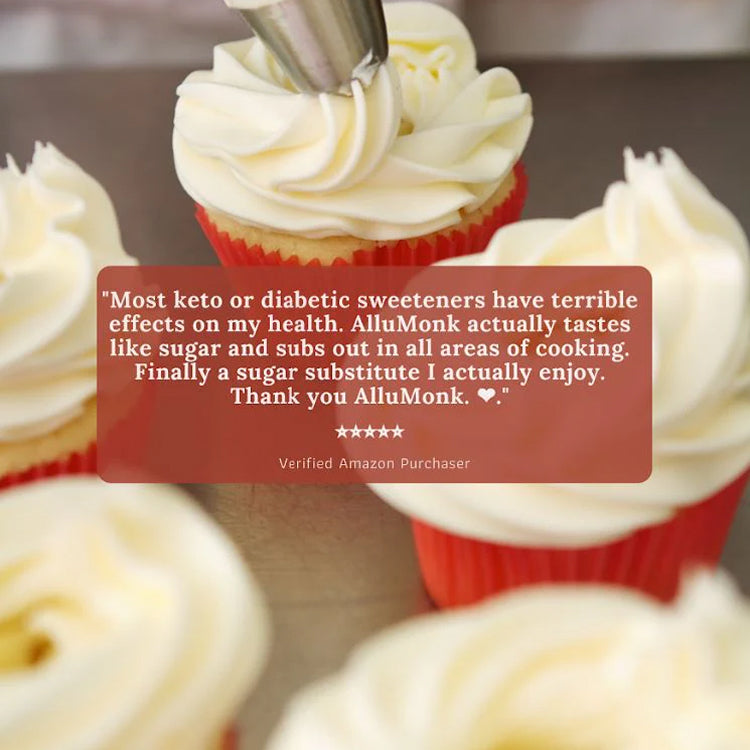
Other research findings
In animal testing, allulose has also shown a huge number of benefits, including:
- Anti-Obesity potential (16, 19)
- Anti-diabetes potential (19)
- Regulation of lipid metabolism (17)
Non-toxic (23) - Improvement of insulin sensitivity (21, 20, 25, 19)
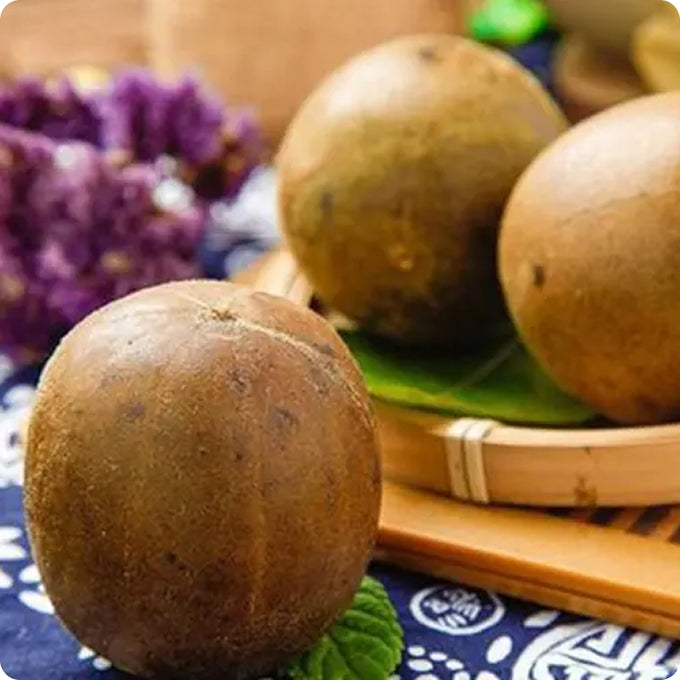
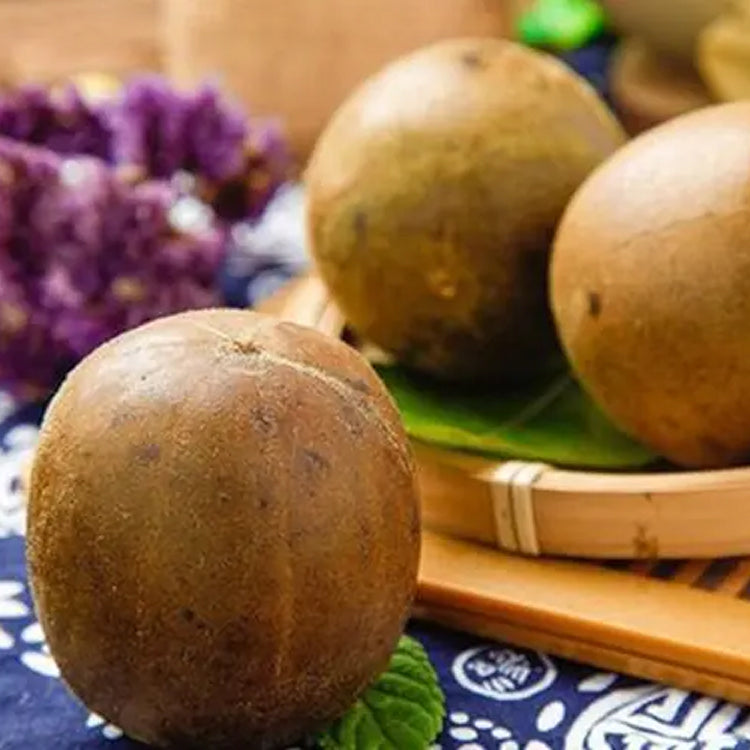
Monk Fruit
The monk fruit is also known as luo han guo or “Buddha fruit.” It’s a small, round fruit that grows on lush vines in small farms in the sub-tropical climate of Asian hillsides.
It’s Chinese name reveals its history: “Luo Han” is actually an order of Buddhist monks who first cultivated the fruit nearly 800 years ago and “Guo” is a shortened version of the Chinese word for “fruit”. The fruit has been used for centuries in traditional Chinese medicine.
Monk fruit sweetener is created by removing the seeds and skin of the fruit and crushing it to collect the juice, which is then dried into a concentrated powder.
Monk fruit gets its intense sweetness from unique antioxidants called mogrosides. During processing, mogrosides are separated from the fresh-pressed juice. This extract is 100–250 times sweeter than table sugar, so monk fruit is often mixed with other natural products, like allulose, to reduce the intensity of the sweetness. Unlike many non-nutritive sweeteners which can cause gas, bloating, or allergic reactions, monk fruit sweetener has no known side effects.
For us, monk fruit was the no-brainer choice to combine with our allulose because its comes with many benefits: